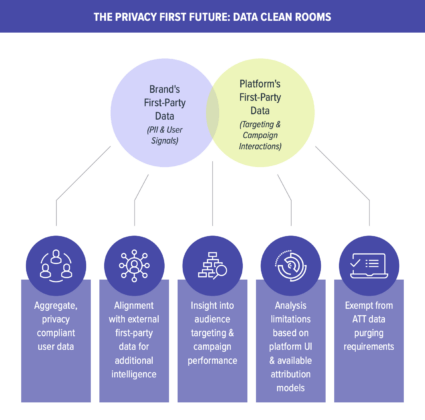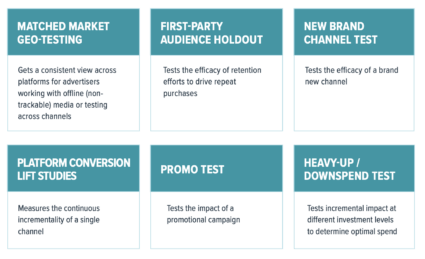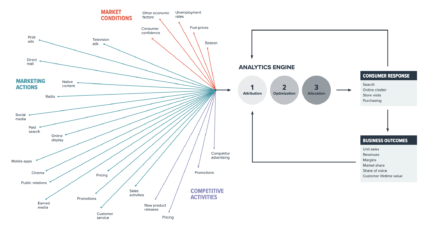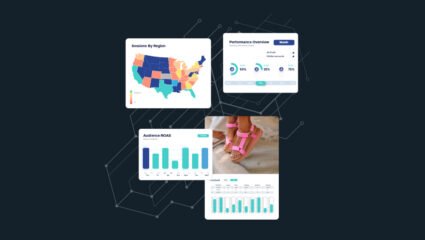By now, every marketer knows the drill: third-party tracking is on its way out. Privacy restrictions in the US and abroad are on the rise and Google has actually started to phase cookies out of its Chrome browser.
That means that if your business hasn’t set up a privacy-resilient data strategy, you’re already late. It might look like a daunting task–many methods can be expensive and time-consuming to set up–but what you do about data today might just be the single most important growth differentiator in the future.
So what should you prioritize to prepare for full third-party data deprecation? Our experts are pointing the way to three solutions that could make the difference between success and failure in a first-party data-driven marketing ecosystem: data clean rooms, incrementality testing, and media mix modeling.
Solution 1: Data clean rooms
As privacy compliance becomes an essential part of your marketing strategy, you need systems in place to both protect the safety of your customer data and fuel campaign targeting and measurement.
Data clean rooms are the solution. They allow marketers to compare data sets, understand user interactions, and draw useful takeaways without risking individuals’ privacy.
With clean rooms, advertisers can query aggregated data (as opposed to customer-level data) to analyze that data under strict privacy controls, so there’s no exposure to underlying personally identifiable information (PII). That means companies using them can’t track individual users, but they can take advantage of insights into those users’ behavior.
But where clean rooms really shine is when brands need to combine data from multiple sources for better measurement. Data in a clean room environment doesn’t face the same restrictions as data on platforms. If a user opts out on an individual platform like Instagram or TikTok, for example, that platform is required to purge their data, but it’s still available in clean rooms because it isn’t identifiable.
 Some of the most important ways you can leverage data clean rooms include:
Some of the most important ways you can leverage data clean rooms include:
- Assessing how upper-funnel campaigns influence performance and interact with lower-funnel campaigns
- Finding the optimal frequency to serve ads before facing diminishing returns
- Developing better customer profiles and audience segments by integrating first-party data with identities matched to the advertising platform
If you’re ready to start using a data clean room, you have several options. If your brand has a large amount of first-party data to work with, you can theoretically create your own clean room, but fair warning: it requires significant effort and investment.
An easier place to start is by working with a third party. Major ad platform players like Google, Meta, and Amazon dominate the clean room landscape because they have more data that’s relatively mature than competitors and can give advertisers better insights into their ad performance on the platform. You should consider which platforms you use most often when making the decision.
You can also consolidate your analysis into one platform through providers like Habu, which let users query multiple clean rooms from one interface.
For all of the positives, data clean rooms also have significant limitations. Most clean rooms only work for a single platform and cannot be combined with other data clean rooms. Many clean rooms also have built-in limits on how many times advertisers can query the same set of data to prevent individuals from being identified in the data set.
Solution 2: Incrementality testing
Marketing should drive incremental growth, and incrementality testing measures just that by removing conversions that would have happened anyway, confirming the actual impact of your campaigns on the purchase decision.
A robust incrementality testing framework can help brands validate modeled performance data and get a clearer picture of how campaigns are affecting the full customer journey.
This testing can help your team understand the true lift in key KPIs and business results driven by marketing, generating critical insights into media effectiveness over time. You can also use incrementality testing to calibrate forecasting and budgeting models to true causality so they can determine the “next best dollar spent” by understanding relative lift across tactics, audiences, and platforms.
There are a variety of tests to choose from depending on the types of data and channels involved and your brand’s priorities. You’ll need to consider whether the test is targeting known (first-party) or unknown (third-party) audiences and whether it is platform-specific or cross-platform.

Once you’ve chosen a test (or tests), your team will need to assign your variables and define sample sizes, budget, and timelines. After the test is deployed, start measuring your results right away–a mid-point analysis is essential to determine if the test is getting results or if you should stop early and change direction.
If you’re just getting started, remember that incrementality testing isn’t an easy lift for most companies. It takes significant time and effort to set up, and it won’t immediately produce feedback for campaign optimization. Consider seeking out reliable partners to help you set up effective testing for your needs.
Solution 3: Media mix modeling
One of the biggest fears around third-party data deprecation is the loss of cross-channel tracking and the potential diminishment of truly integrated measurement and insights. Media mix modeling (MMM) will help you determine the optimal media mix across every channel and platform and forecast the budget you need.
MMM is a holistic measurement approach marketers use to determine cross-channel lift driven across all marketing efforts, including hard-to-measure effects like diminishing returns.
Brands leveraging an MMM input some deterministic data and model for the rest, leveraging past data to predict future investments. Ideally, you’ll include brand metrics as inputs so you can use the model to understand the effect of those metrics on conversions. These models should also incorporate non-media variables, including economic factors, price changes, promotions, inventory levels, etc., to accurately determine media impact.

Source: Harvard Business Review
While MMMs offer marketers a good way to predict future growth and quantify brand metrics, these models also have their challenges. MMMs can be pricey and slow, but the biggest issue for most marketers looking to leverage this measurement method is that developing this kind of model takes years of data.
Luckily, there’s a new kind of MMM in town: high-velocity MMMs, like Wpromote’s Growth Planner, which leverage today’s increased data availability, computing power, and automation to measure channel impact on past conversions and accurately predict outcomes without using individual data. That speeds up the MMM process to make it more efficient for marketers.
High-velocity MMMs also provide more frequent insights to help marketers adapt faster. Marketers can get nearly real-time results and more detailed insights to power better performance.
With these three components in place, your data strategy will be better equipped to deal with the continued deprecation of third-party tracking before it happens. And while all these changes in the data ecosystem might be intimidating, there’s a silver lining: privacy-compliant systems allow you to solve the blind spots that always existed in outdated tracking methods.
First-party data tracking takes into account channels cookie-based attribution overlooked, like TV, radio, OHH, and other channels. It can also provide a more accurate view of performance while protecting customer privacy.







Responses